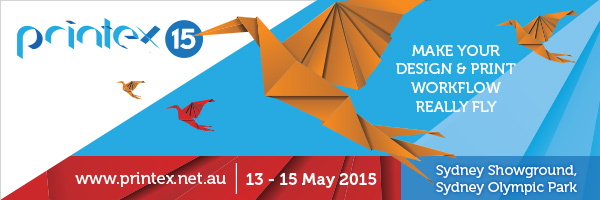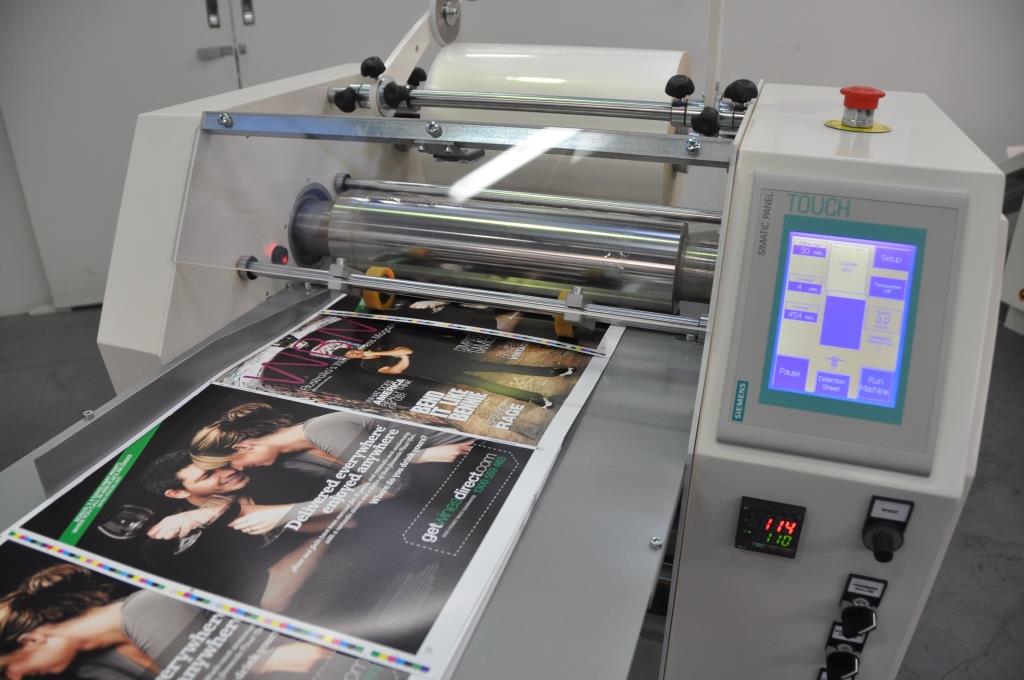 |
 |
|
April - June 2015
Issue No. 5
Inside this issue
Gearing up for Printex 15 The NEW Minibond 520 has arrived! Tech Tips: Sticking to Digital Print Matt's Wrap: Automatic Laminators: a buyers guide
Our Staff
Meet Matt Wright... The Machine Guru! Matthew has over 25 years of experience in laminating and repairing machines. His research and development has resulted in our popular brands such as the Sign Master, Sign Easy and MiniBond machines. He ensures we import and supply machinery and consumables of the highest quality, and has a reputation throughout the industry as the laminating machine specialist. When he isn't travelling and servicing machines, he can be found racing his old Holden HQ and enjoying family time with his young son.
Matt's Wrap:
Automatic
Laminators: a buyers guide
The first thing I look for in an automated laminator is how the feeder and laminator work together. If the feeding system is not a rear lifting and forwarding stack type feeder the machine is best avoided, and even if it is it needs to be a good version. It needs simple robust fittings and easy quick adjustments. You do not want to have to adjust 20 separate controls, knobs and taps just to feed a sheet, this is an indicator of bad design work. The next aspect to consider is the critical heating system. With most large automatics running heat exchange systems to provide maximum heating, we need to be careful when choosing a smaller non heat exchange machine. Electrically heated (resistance type) machines have a very limited speed range (10m/min max) unless they are very well designed, like the patented Qlam style. Following on, the sheeting/separating/bursting system is also required to perform well with good adjustable de-curl, with minimum adjustments and fiddling needed to provide a good result. Film loading and unloading, ease of cleaning the rollers (and you will need to do this a lot, it is often overlooked) and simple maintenance routines are indicative of good design by the manufacturer. Finally, less is more with automated machines. They need to be designed well so you don't have to be an industry leading expert to run one. A myriad of small adjustments on machines is a sure sign of after thoughts trying to correct inherent problems with the machine. Do your homework and you'll get a money-making asset for your business, not a dust collector that no one wants to use!
Next Issue
Follow up from Printex Product Profile: LEDCO from U.S.A Tech Tips: how to set your roller pressure Matts Wrap: Encapsultors: heatshoe or hot roll? Staff Profile: Sarah Smith
We hope you enjoyed our latest newsletter! If you have any feedback or topics you would like us to include, please contact us on info@lamination.com.au |
Gearing up for Printex 15 It's trade show time again!! Printex 15 is on 13th - 15th May at Sydney Showground, Sydney Olympic Park. Printex allows you to source the latest products and services across all industry sectors, in one place at one time. We are excited to demonstrate our latest range of print finishing and laminating equipment. As the variety of materials and products increase, we incorporate these technological advances directly into our machine production. This results in superior, user-friendly machines without compromising quality or reliability. At Printex, we will be showcasing the new Minibond 520 for the very first time and will demonstrate the popular Sign Master Flatbed Applicator Table. 
Also on display:
Our staff look forward to discussing your laminating requirements. Whether you are after solutions for digital or offset print, entry level or large automatic machines for a small copy shop or large print house we have you covered. The benefits of being trade service providers are that Lamination System are able to offer our clients practical advice and experience in all areas of film lamination. Deal with the experts in all areas of celloglazing, encapsulating, wide-format, cold laminating and mounting and experience the benefits for yourself. Take advantage of over 20 years experience and come see the Lamination Specialists at stand 2723!
NEW!!! Minibond
520 Laminator The Mini Bond 520 Celloglazing Machine is a proven solution, allowing easy lamination for digitally and offset printed applications up to 485mm wide. This compact machine has a convenient one person operation with an accurate belt fed system, built in de-curl unit and rewind drum. This 520mm wide machine has been designed to laminate SRA3 sheets landscape, resulting in increased efficiency and high quality finish. Capable of single and double sided celloglazing, the Mini Bond 520 is perfect for laminating business cards and covers and a great addition to any print room. 
Features Include:
Want to see one in action? Check out our video page, subscribe to us on YouTube or phone 1300 099 030 to arrange a demonstration today!
Tech Tips
Sticking to Digital Print
The most common question we get asked by printers is "How do I stick to my digital print?" With technology constantly changing and finishing struggling to keep up, we have established four key points in gaining the best adhesion possible to all digital print.
In order to gain sufficient heat and pressure to stick to your digital output, it is essential your celloglazing machine has a large diameter chromed heating roller. The larger the diameter of the chrome roller, the greater the contact area is and the faster you can laminate. To gain speed from this process your machine must also have compressed air.
Finding the perfect temperature for laminating is trial and error, as all machines vary slightly in calibration and all films vary in processing temperatures. Ensure your machine has sufficient warm up time which for most desktop laminators is around 20-30 minutes. The temperature needs to be between 110 C and 120 C and always sacrifice the 3rd sheet to test adhesion by scoring and roughly cutting at the surface. You may need to increase the temperature slightly while you are running your job, as constantly laminating will draw heat out of the machine. Just remember to reduce the temperature again when you are finished! If the machine is too hot, the film will crease and shrink towards the centre. Turn it down a little, wait 10 minutes for it to respond and start again. Speed: As a rule, digital output needs to be laminated at slow speed. The heavier the toner, the slower the processing speed. With the only exception being a machine with a large diametre, chromed heating roller and compressed air as discussed. If you increase or alter your speed while laminating, always remember to re-check the adhesion level. It may seem time consuming to laminate digital print properly, however it saves time in the long run by not having to reprocess or reprint your job! Film: Probably the most important point, different digital print requires different film. Establishing your output will determine the best film for the job, or when in doubt, do as we do and just run our Premium Digital BOPP 45 Micron as we know it sticks to everything!
|
|||
 |




